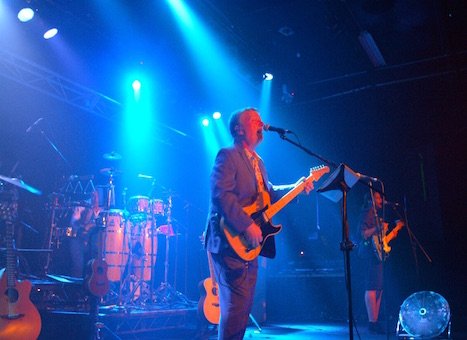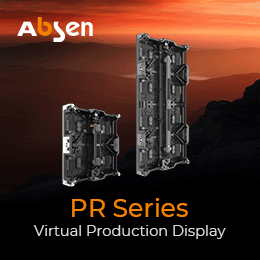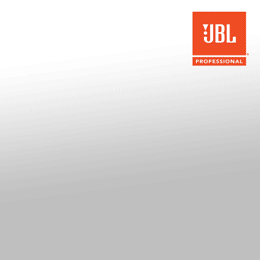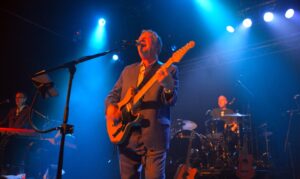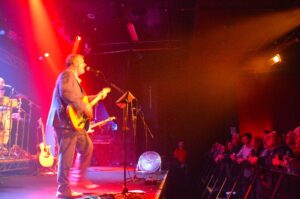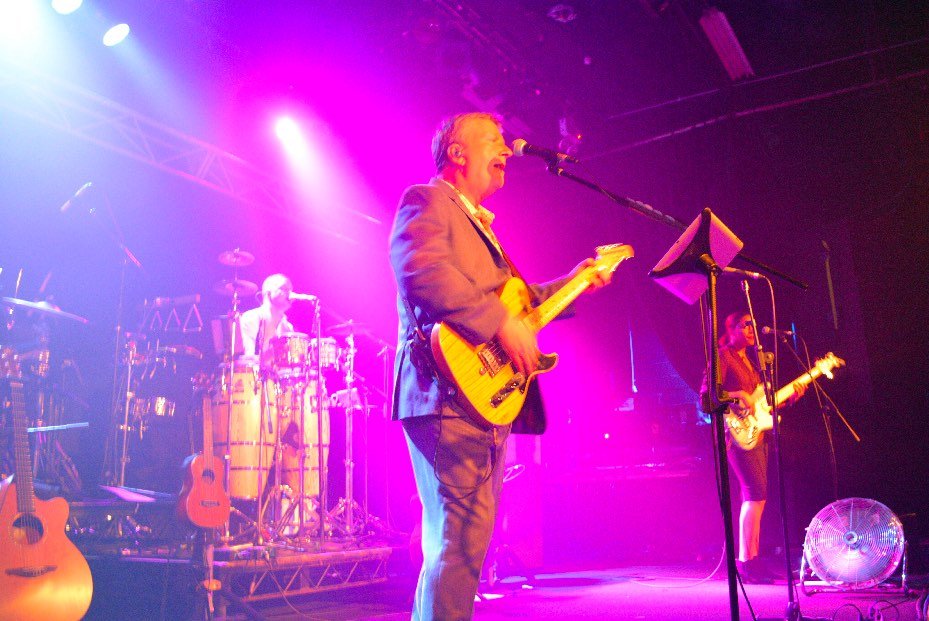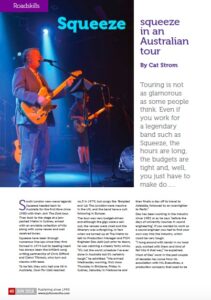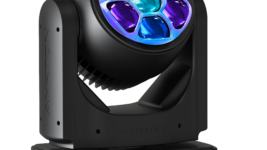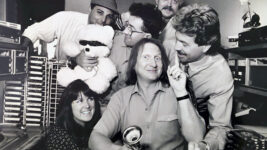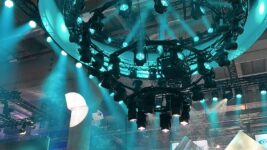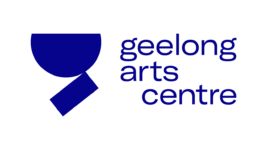Subscribe to CX E-News
Roadskills
Squeeze – squeeze in an Australian tour
By Cat Strom.
Touring is not as glamorous as some people think. Even if you work for a legendary band such as Squeeze, the hours are long, the budgets are tight and, well, you just have to make do.
South London new-wave legends Squeeze headed back to Australia for the first time since 1980 with their Join The Dots tour. They took to the stage at a jam-packed Metro in Sydney, armed with an enviable collection of hits along with some newer and well received tunes.
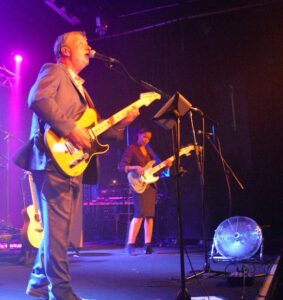 Squeeze have been through numerous line-ups since they first formed in 1974 but its beating heart has always been the brilliant song writing partnership of Chris Difford and Glenn Tilbrook, who turn out classics with ease. To be fair, they only had one hit in Australia; Cool For Cats reached no.5 in 1979, but songs like Tempted and Up The Junction were massive in the UK, and the band have a cult following in Europe.
Squeeze have been through numerous line-ups since they first formed in 1974 but its beating heart has always been the brilliant song writing partnership of Chris Difford and Glenn Tilbrook, who turn out classics with ease. To be fair, they only had one hit in Australia; Cool For Cats reached no.5 in 1979, but songs like Tempted and Up The Junction were massive in the UK, and the band have a cult following in Europe.
The tour was very budget-driven and although the gigs were a sell-out, the venues were small and the itinerary was unforgiving. In fact when we turned up at The Metro to talk to Production Manager and FOH Engineer Des Jabir just prior to doors, he was catching a cheeky forty winks.
“It’s not the worst schedule I’ve ever done in Australia but it’s certainly tough,” he admitted. “We arrived Wednesday morning, first show Thursday in Brisbane, Friday in Sydney, Saturday in Melbourne and then finally a day off to travel to Adelaide, followed by an overnighter to Perth.”
Des has been working in the industry since 1982 or as he says ‘before the days of university courses in sound engineering’. If you wanted to work as a sound engineer you had to find your own way into the industry, which could be very tough.
“I hung around with bands in my local pub, worked with them and kind of fell into it that way,” he explained. Most of Des’ work in the past couple of decades has come from his association with ML Executives, a production company that used to be owned by The Who, where he tended to combine his production managing and FOH mixing skills.
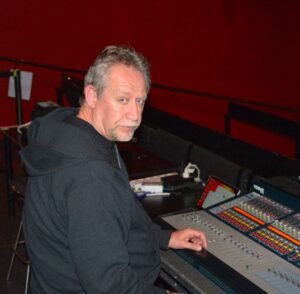
FOH engineer Des Jabir
“I’ve really only recently returned to FOH work, from a sizable stint doing mainly production in the comedy world, but I soon realized I had to get back to my first love of mixing rock’n’roll,” said Des. I first toured with Squeeze in 1985 when I was working for their support band The Tempest. Fast forward to three summers ago, I stood in for their FOH guy for a few shows and then started properly with them last year. We did six weeks in the UK followed by four weeks in the US.
“We share a lot of geographic history as I grew up where they did – in fact one of their early gigs was at my school disco. They are lovely people and it is a real privilege to work for them.”
Des has somehow found himself working with quite a repertoire of 80s bands, including Holly Johnson and OMD, leading him to remark that his 80s CV is pretty impressive! According to Des, this Australian tour is down the bottom end of the budget as traveling to Australia is expensive and the venues they are playing are quite small.
Basically everyone is ‘making do’. The crew consisted of Des, two backline guys and the tour manager who doubles as merchandiser and general dog’s body. At each venue someone was picked up locally to run the lighting. “We’ve been very lucky picking up local monitor engineers,” added Des. “We have a good guy tonight and we had a great one yesterday but in fairness, it’s always been my experience in Australia. The audio crews are very hard working and very skilled.”
At The Metro Des was running an Avid SC48 console because when he looked at the specs for the five Australian shows, two venues had them in house, and he happened to have a show file for an SC48.
“Our last gig in Perth has an in house DiGiCo SD9 so I’ll have to build a file for that but that’s fine because I can then convert it for when we go to Singapore where I’ll have an SD8,” said Des. “The SC48 is getting a bit old now but I’m very comfortable with it because of my love for the Avid Profile.”
Des comments that mixing audio is a very personal thing, and with Squeeze there are two key areas to consider. Firstly, there are songs with layers and structures built around very intense keyboard sounds. Secondly, it’s the way Glenn and Chris’ vocals interact, although Chris could not make the Australian tour as he’s unable to travel.
“That alone brings a whole new dimension to the mix,” stated Des. “Chris has an amazing tone to his voice and it’s the balance between the two voices that actually makes the Squeeze sound.”
Des uses everything on the console and travels with two USB sticks; one containing his show files and the other his Waves licenses. He always asks for an Avid with Waves 9 enabled and there are a couple of plugins he uses generally in his show files.
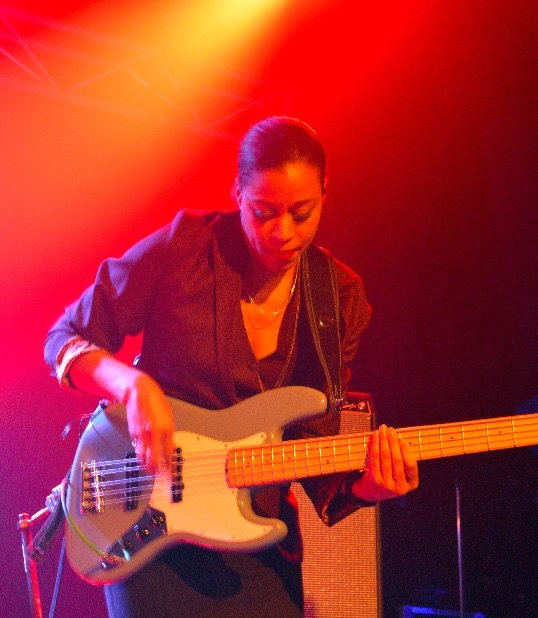 “The SC48 only has two engines so you’re extremely limited in the number of plugins you can use,” said Des. “So what I did when I switched to the SC48 was totally wipe out all channel plugins that I was using and just bring in the effects. I have a couple of reverbs, a delay I use in one song, and a doubler for the backing vocal.”
“The SC48 only has two engines so you’re extremely limited in the number of plugins you can use,” said Des. “So what I did when I switched to the SC48 was totally wipe out all channel plugins that I was using and just bring in the effects. I have a couple of reverbs, a delay I use in one song, and a doubler for the backing vocal.”
At The Metro Des had to tackle the in-house Nexo Alpha PA, a system he says is not seen too often in the UK clubs he normally works in. He further commented that it was surprising and interesting to be using a point source PA again. “They’re so rare now – even when I did a small theatre tour with Squeeze I toured a mini line array,” he added.
“Having said that, it works, it’s well set-up and tonally it’s as nice as the room allows it to be. It’s a bit of a rattley old metal room empty but I’m sure it will be fine when the room is full.”
The band uses Sennheiser G3 IEMs and tour their own in-ear rack. The drummer uses a hard wired pack fed from a mixer to adjust his own click levels. If he can’t get them exactly right, it throws him. He takes the click and the loops straight into the mixer and then takes a stereo mix from the monitor engineer and combines all four.
As to microphones, Des always says ‘if you can’t do a gig with Shure SM57s and SM58s you shouldn’t be doing the job’ and he admits that a couple of times that has put him to the test!
“The line list is DI heavy with sixteen channels, but the rest of it is drums, percussion and the usual stuff,” he added. “Apart from a couple of condensers for overheads, you can do it with SM57s and SM58s. Yes, it would be nice to have lovely Sennheiser 900 Series for your toms and Beta 98A for your percussion but when they are not available you make do with what you have.”
This article first appeared in the print edition of CX Magazine June 2018, pp.40-42. CX Magazine is Australia and New Zealand’s only publication dedicated to entertainment technology news and issues. Read all editions for free or search our archive www.cxnetwork.com.au
All text and photos © CX Media
Subscribe
Published monthly since 1991, our famous AV industry magazine is free for download or pay for print. Subscribers also receive CX News, our free weekly email with the latest industry news and jobs.


